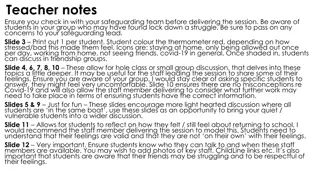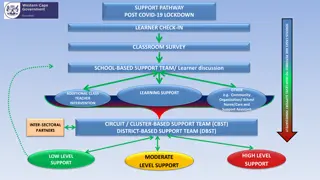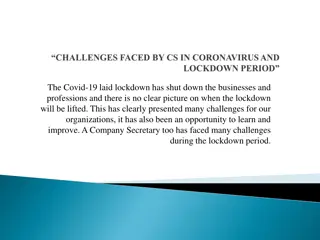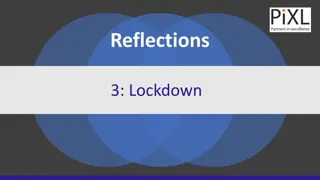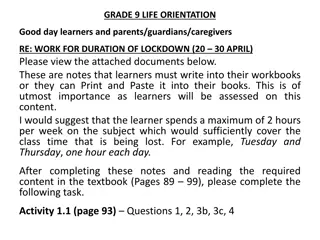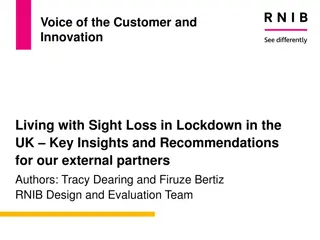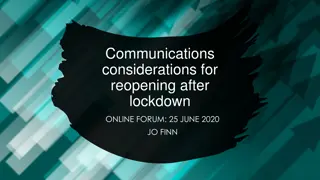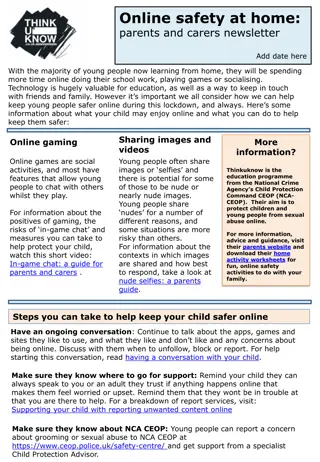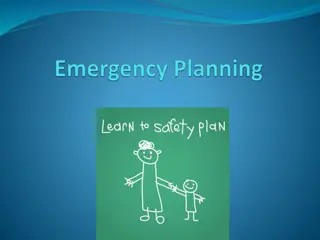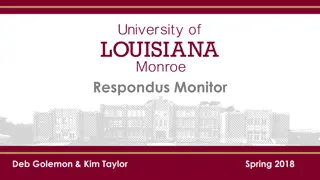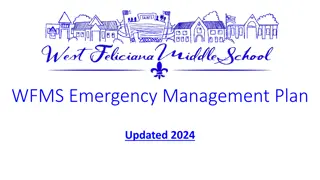LOCKDOWN TRAINING
A school lockdown is essential for ensuring the safety of students and staff during threats of violence. Guidelines cover reasons for lockdowns, provincial requirements, procedures, and new lockdown forms like ALICE. Training and preparation are vital for effective responses in such emergency situations.
Download Presentation

Please find below an Image/Link to download the presentation.
The content on the website is provided AS IS for your information and personal use only. It may not be sold, licensed, or shared on other websites without obtaining consent from the author.If you encounter any issues during the download, it is possible that the publisher has removed the file from their server.
You are allowed to download the files provided on this website for personal or commercial use, subject to the condition that they are used lawfully. All files are the property of their respective owners.
The content on the website is provided AS IS for your information and personal use only. It may not be sold, licensed, or shared on other websites without obtaining consent from the author.
E N D
Presentation Transcript
PURPOSE OF LOCKDOWN A lockdown may be necessary in several specific situations. A school lockdown means the restriction of movement of students and staff due to a threat of violence within or in relation to the school. During a lockdown, exercise critical judgment to maximize safety. Lockdown is no longer a stand-alone defensive strategy.
PROVINCIAL REQUIREMENTS The Safe Schools Regulation, Section 8, requires that schools practice lockdown drills at least twice each year. At least once during each term or semester but practicing more often is preferred by authorities.
Procedures for lockdowns must be shared with all staff and students at the beginning of the school year. Copies of the procedures must also be provided to substitutes along with the emergency information in their sub folders.
NEW REQUIREMENTS Lockdowns can take on three forms depending on the specific nature of the incident: 1) ALICE Lockdown 2) Hold & Secure 3) Shelter in Place
ALICE LOCKDOWN Lockdown refers to the restriction of movement of students and staff due to a threat of violence within the building. The objective of a lockdown is to secure occupants out of sight and in a safe location in the event of an active threat where serious injury or death is imminent or occurring.
There is no single answer for what to do when there is a threat of violence, but a survival mindset can increase the odds of surviving. No single response fits all situations however, making sure that staff and students know their options for response and their ability to react decisively will save valuable time and lives.
ALICE training & procedures provide preparation and a plan for individuals and organizations on how to more proactively handle the threat of an aggressive intruder or active shooter event. During an active shooter/intruder situation, the natural human reaction, even if you are highly trained, is to be startled, feel fear and anxiety, and even experience initial disbelief and denial.
Training provides the means to regain your composure, recall at least some of what you have learned, and commit to action. During an intruder/active shooter situation, staff will rarely have all of the information they need to make a fully informed decision about which option is best. While they should follow the plan and any instructions given to them by the school, often they will have to rely on their own judgment to decide which option will best protect lives.
The A.L.I.C.E. acronym stands for : A - ALERT : Call 911. Don t assume others are contacting law enforcement. Give as clear and accurate information as possible that will answer the vital questions of who, what, when, where, and how. At this point in the scenario the WHY does not matter.
L - LOCKDOWN : If running is not a safe option, hide in as safe a place as possible. Students and staff should be trained to hide in a location where the walls might be thicker and have fewer windows. In addition: Lock the doors; Barricade the doors with heavy furniture; Close and lock windows and close blinds or cover windows; Turn off lights; Silence all electronic devices; Remain silent; Hide along the wall closest to the exit but out of the view from the intruder Ready a plan of evacuation or counter tactics should the need arise Use strategies to silently communicate with first responders, if possible.
I - INFORM Constant, Real-time Updates This can be accomplished with things such as video surveillance equipment or public address systems. Information updates to staff over a PA system during a violent intruder incident allows occupants to make sound decisions about where the intruder is, how to react and what steps to take next. For example: should I evacuate, barricade or counter an attack?
C - COUNTER THE ATTACK (or distract the assailant) If neither running nor hiding is a safe option, as a last resort when confronted by an intruder/shooter, adults and students in immediate danger should consider trying to disrupt or incapacitate the them by using aggressive force and items in their environment. Move and utilize methods to distract the shooter/ intruder s ability to accurately shoot or cause harm, such as loud noises or aiming and throwing objects at the shooter/intruder s face or person. If an intruder enters and begins causing harm, any and all actions to stop the them are justified.
E - EVACUATE Get Out! Your goal here is to put as much time and distance as possible between you and the attacker. If it is safe to do so for yourself and those in your care, the first course of action that should be taken is to run out of the building and far away until you are in a safe location. Students and staff should be trained to: Leave personal belongings behind; Visualize possible escape routes; Take others with them, but not to stay behind because others will not go; Call 911 when safe to do so; and Let a responsible adult know where they are.
AFTER AN EVENT: A law enforcement officer s first priority during an intruder/active shooter event is to locate and stop the person(s) believed to be the shooter(s). All other actions are secondary including administering first aid to wounded staff and students.
Students and staff must cooperate and not to interfere with first responders in any way. When law enforcement officer(s) arrive everyone must display empty hands with open palms. Law enforcement may instruct everyone to place their hands on their heads or they may search individuals. Once the scene is secured, paramedics will be allowed on site to treat any injured.
LOCKDOWN IS NO LONGER ENOUGH: The ALICE protocol is a new concept that gives staff and students more options when faced with the threat of violence. Previous lockdown protocols allowed staff to only lock doors and hide. The ALICE protocol allows staff to : Evacuate it if is safe to do so Baracade their doors Counter an attack to survive and protect others from harm.
HOLD & SECURE Occurs when the school is notified of a potential threat or emergency situation happening outside of the school. Is typically initiated by police but can be initiated by the school administrator.
PROCEDURE: If police are unaware of the situation, call 911. All external doors will be locked and monitored by staff closest to school exits. Divisional hold and secure signs will be placed in the windows of the main doors. An announcement will be made to notify staff and students that the building is in hold and secure. Classes may continue to function normally but movement outside the building will be restricted. Blinds should be closed and/or windows covered as much as possible. No one will be allowed to enter the school until the all clear is given by the administrator or police.
SHELTER IN PLACE This is mainly used for environmental or weather related events. It is used when personal safety is considered to be in danger if anyone leaves the school. Provides a refuge for students, staff and the public inside the school building during an emergency. Examples include: tornado, train derailment, severe thunderstorm, etc.
PROCEDURE: Direct all students, staff and visitors, including those outside the school such as on the playground, into the designated safe areas. Move students from portable classrooms to an interior safe area in a permanent structure. Depending on the scenario occurring outside have everyone kneel down and be ready to cover their heads to protect from debris, if appropriate. Remain in shelter until the event has passed and you have been notified by the principal or public safety official that it is safe to exit.



